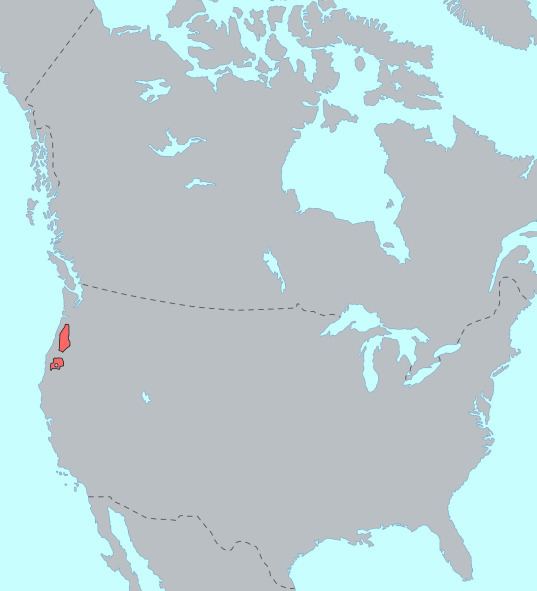ISO 639-3 tkm | ||
 | ||
Ethnicity Takelma, Latgawa, Cow Creek band of Upper Umpqua Language family Penutian or language isolate | ||
Takelma /təˈkɛlmə/ was the language spoken by the Latgawa and Takelma people and Cow Creek band of Upper Umpqua. It was first extensively described by Edward Sapir in his graduate thesis, The Takelma Language of Southwestern Oregon. The last fluent speaker of Takelma, with whom Sapir worked while writing about the language, was Frances Johnson (Gwísgwashãn).
Contents
Dialects
There was possibly a Cow Creek dialect spoken in southwestern Oregon along the South Umpqua River, Myrtle Creek, and Cow Creek.
Genealogical relations
Takelma is a language isolate.
Takelma was once considered part of a Takelma-Kalapuyan language family together with the Kalapuyan languages (Swadesh 1965). However, a paper by Tarpent & Kendall (1998) finds this relationship to be unfounded because of the extremely different morphological structures of Takelma and Kalapuyan. DeLancey follows this position. However, Takelma is commonly proposed as part of the Penutian super-family, as first suggested by Edward Sapir.
Grammar
Takelma like many Native American languages is polysynthetic meaning that you can link together many different morphemes to form a word. Therefore one single word can often contain a lot of information that in English would be portrayed in a full sentence. This is mainly done by adding affixes to verbs.
Tense
Takelma has 6 different tenses listed below with the first (aorist) being the basic tense which is equivalent to the immediate future, present, and past.
- Aorist
- Potential
- Future
- Inferential
- Present Imperative
- Future Imperative
Person and possession
In Takelma, possession is marked by a set of affixes. Most of them are suffixes but there is one prefix. Below is a table of the four declensional sets.
Set I is only ever used with terms of kinship. For example:
Set II is used with bare stems or stems having the formant. For example:
Alternations between –t and –tʰ in set II and set IV is regular and predictable.
Set III is used with stems having other formants. For example:
Set IV is used in locative constructions. For example:
versus versuswa-té ‘to me’
Object Markers
Takelma has a complex system of verbal pronominal suffixes and is also accompanied by the loss of case markers on nouns. This represents a complete shift to full head marking. So far the only actual examples I have found are in the 3rd person object marker in Takelma, which is the suffix –kʰwa which is realized on the verb. However the distribution of –kʰwa is very restricted.
Here is the full set of object markers:
For the 1st and 2nd person objects overt marking is required with clear difference between singular and plural. For 3rd person there is no difference between singular and plural and there is also alternation between the suffix –kʰwa and zero suffix.
The zero variant occurs with animates as well as inanimate, covert pronouns, and overt nominals.
However –kʰwa occurs in three distinct environments. First, when the subject is also 3rd person. Second, it is always used when the object is higher in animacy than the subject. This means that the object refers to a human also a mythic animal that is thought of as a human being. The third situation is when the subject and object are of equal animacy but the object outranks the subject in topicality.
